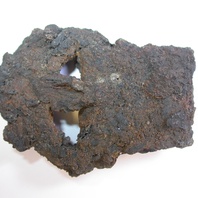
Viking Objects
Iron Buckle (1985/225-8)
An iron buckle found in Mound 6 at Heath Wood, Ingleby, Derbyshire. It is one of two iron buckles found in this burial mound together with a small number of bronze fragments and iron nails. This buckle has parallels in Scandinavia.
Read More
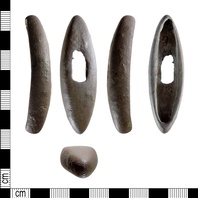
Viking Objects
Sword Hilt or Top Guard (DENO-87124F)
A copper-alloy hilt or top guard from an early medieval, possibly Viking, sword or dagger.
Read More
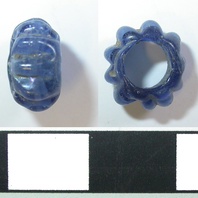
Viking Objects
Blue Glass Bead (2001/59-sf174)
This Viking Age gadrooned or Melon type dark blue glass bead was found in the Magistrates Court excavation in Derby, Derbyshire. Glass beads were a coveted item for making jewellery with some being imported from as far away as the Middle East. They were manufactured by specialised artisans who would heat various coloured glass rods over a furnace and melt the glass onto a metal stick to form different shaped beads.
Read More
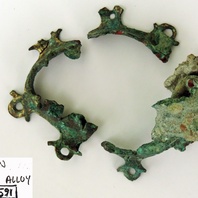
Viking Objects
Gilded Mount (1989-59/7591)
A gilded copper-alloy mount with approximately eight projecting pierced lugs. The mount was found in three pieces and is incomplete. It may originally have been domed, but most of the dome is missing. It has been suggested that it was a shield boss.
Read More
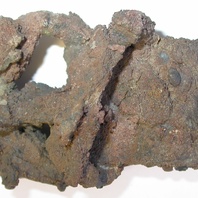
Viking Objects
Iron Buckle (1988/225-9)
An iron buckle found in Mound 6 at Heath Wood, Ingleby, Derbyshire. It is one of two iron buckles found in this burial mound together with a small number of bronze fragments and iron nails. This buckle features a strap slide secured between the backplate and two terminal rivets.
Read More
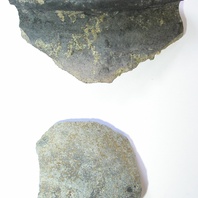
Viking Objects
Early Medieval Pottery (Full Street)
These fragments of early medieval pottery are from Full Street, Derby, a site on the south-eastern corner of the Viking Age town.
Read More
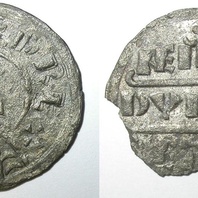
Viking Objects
Coin of Alfred the Great (1989-58/3381)
This silver penny from the mass grave at Repton was minted by a moneyer called Dudwine in Canterbury for Alfred the Great. Alfred was King of Wessex from 871 to 899 and spent most of his reign fighting off Viking invasions. He won a decisive victory at the Battle of Edington in 878 which resulted in a peace with the Vikings and the creation of the Danelaw. Minting coins was a way of controlling the means of exchange within a kingdom and which created a more easily administered standardized system of trade. Moreover, the coins themselves were often used as propaganda, portaying symbols and statements that gave off a desired message. The Vikings later used the minting of coins to legitimize their own rule.
Read More
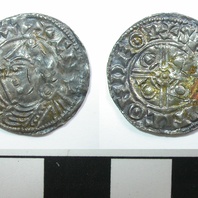
Viking Objects
Silver Penny (1960/459-2)
This silver penny was minted in Derby for King Cnut the Great, the Danish king who reigned over England from 1016-1035. It is not known precisely where it was found. Minting coins was a way of controlling the means of exchange within a kingdom and which created a more easily administered standardized system of trade. Moreover, the coins themselves were often used as propaganda, portaying symbols and statements that gave off a desired message. The Vikings later used the minting of coins to legitimize their own rule.
Read More
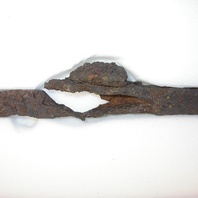
Viking Objects
Sword Fitting (1985/225-13)
This is the lower guard of a sword that may have been a Petersen Type H sword with triangular pommel. This style of sword is the most common type found in Norway and accounts for approximately 25% of those found in Ireland. It was found about 760mm from an iron sword blade in Mound 7, along with iron nails and a fragment of a possible iron spur.
Read More
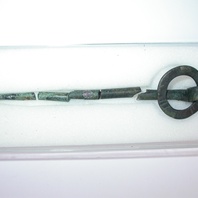
Viking Objects
Ring-headed Pin (2004-311-sf245)
This ring-headed pin was uncovered in a cremation burial which was generally unfurnished and containing little evidence. This type of pin was fairly common throughout the Viking Age and was used to hold a cloak around one’s body.
